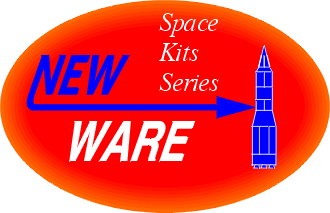 NW047 1/144 MERCURY REDSTONE
NW047 1/144 MERCURY REDSTONEFreedom 7 LV
 NW047 1/144 MERCURY REDSTONE
NW047 1/144 MERCURY REDSTONE
Freedom 7 LV


In July 1951, Von Braun and his team began to build a large
guided missile - Redstone. To power this missile, North American
Aviation scaled up a V-2 engine, that burned a liquid
oxygen-alcohol fuel. During the powered portion of flight,
control of the missile came from carbon vanes located in the
engine exhaust and after that from air rudders on the tip of each
fin. It was determined that the range and accuracy could be
increased if the warhead separated from the booster after engine
burnout. The warhead section had four air vanes to control the
final trajectory to target after separation.
The Redstone may be best known for its role in the Mercury
program. 6 Redstone launches from November 1960 to July 1961
carried Mercury capsule on suborbital flights. The last two of
these carried Alan Shepard and Gus Grissom, the first two
Americans in space.
Mercury-Redstone 3 was the first US manned spaceflight. At 9:34
AM, on May 5, 1961, booster MR-7 liffted off from Cape Canaveral
with Alan Shepard riding Mercury spacecraft no. 7, nicknamed
Freedom 7. The spacecraft reached peak altitude of 116 miles (186
km). At 9:49, Freedom 7 splashed into the Atlantic Ocean, 487
miles (780 km) from the Cape.